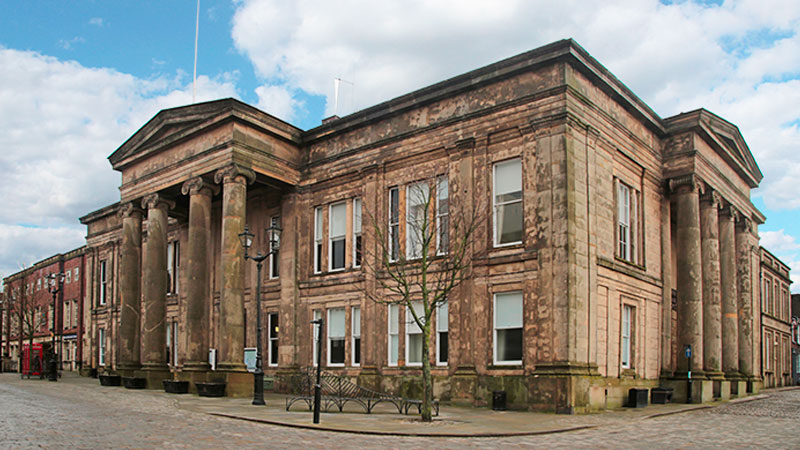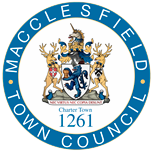
Your Macclesfield
A brief history
Macclesfield was granted a borough charter by Earl Ranulf III of Chester, in the early 13th century, and a second charter was granted by the future King Edward I, in 1261. The parish church of All Saints was built in 1278, and the Savage chapel built in 1504.
Macclesfield was the administrative centre of the Hundred of Macclesfield, which occupied most of east Cheshire. The Earl of Chester’s manor of Macclesfield was very large, and its boundary extended to Disley. The manor house was situated on the edge of the deer park in Sutton.
The Earls of Chester established the Forest of Macclesfield which was much larger than its present-day namesake. It was used for hunting deer and boar, and pasturing sheep and cattle.
Macclesfield Castle was a fortified town house built by John of Macclesfield between the years 1391 to 1393. He was an important official in the Court of Richard II and received many favours from Richard. The King dined with him in the Macclesfield residence early in 1399, when he was joined by his Macclesfield bodyguards before the army marched into Wales.
Macclesfield had three principal mediaeval streets, Jordangate, Chestergate and the King’s Highway (which became known as Millgate). Jordangate, which led down to the river Bollin, formerly known as the river Jordan, and Chestergate, leading out of the town towards Chester, still exist. Millgate, which led down to the King’s mills on Mill Green, is now known as Mill Street.
In 1642, during the Civil War, the town was occupied for the king by Sir Thomas Aston, a Royalist. The town was subsequently bombarded and taken by a parliamentarian force under Sir William Brereton. After the war the sequestration of many properties took place, mostly from the Earl of Derby’s estate, the earl having been beheaded on the orders of Cromwell and the Council of the Commonwealth.
In the Jacobite Rising of 1745, Charles Stuart and his army marched through Macclesfield as they attempted to reach London. The mayor was forced to welcome the prince, and the event is commemorated in one of the town’s silk tapestries. Macclesfield was once the world’s biggest producer of finished silk. There were 71 silk mills operating in 1832. Paradise Mill is a working mill museum which demonstrates the art of silk throwing and Jacquard weaving to the public. The four Macclesfield Silk Museums display a range of information and products from that period.
Macclesfield is the original home of Hovis breadmakers, produced in Publicity Works Mill (commonly referred to as “the Hovis Mill”) on the canal close to Buxton Road. It was founded by a Macclesfield businessman and a baker from Stoke-on-Trent. Hovis is said to derive from the Latin “homo-vitalis” (strength for man) as a way of providing a cheap and nutritious food for poor mill workers and was a very dry and dense wholemeal loaf completely different from the modern version.
Between 1826 and 1831 the Macclesfield Canal was constructed linking Macclesfield to Marple to the north and Kidsgrove to the south. The canal was surveyed for its Act of Parliament by the canal and roads engineer Thomas Telford, and built by William Crossley, the Macclesfield Canal Company’s engineer. It was the last narrow canal to be completed and had only limited success because within ten years coal and other potential cargo was increasingly being transported by rail.
Waters Green was once home to a nationally known horse market which features in the legend of the Wizard of Alderley Edge. Waters Green and an area opposite Arighi Bianchi, now hidden under the Silk Road, also held a sheep and cattle market until the 1980s. Macclesfield is said to be the only mill town that was not bombed during World War Two.
The town was first represented in Parliament after the Reform Act of 1832, when it was granted two members of Parliament. This situation lasted until 1880, when after problems at the general election that year it was decided to declare the election void and suspend the writ of election (therefore no by-election could take place). In September 1880 a Royal Commission was appointed to investigate further. A report of March 1881 confirmed the allegations of corruption. As a result, the borough constituency was disenfranchised for corruption. The disenfranchisement took effect on 25 June 1885, when the town was transferred to the East Cheshire constituency. However under the Redistribution of Seats Act 1885 the Macclesfield constituency was recreated with extended boundaries, as a county division, later in 1885. Since the 1885 general election it has elected only one MP.
